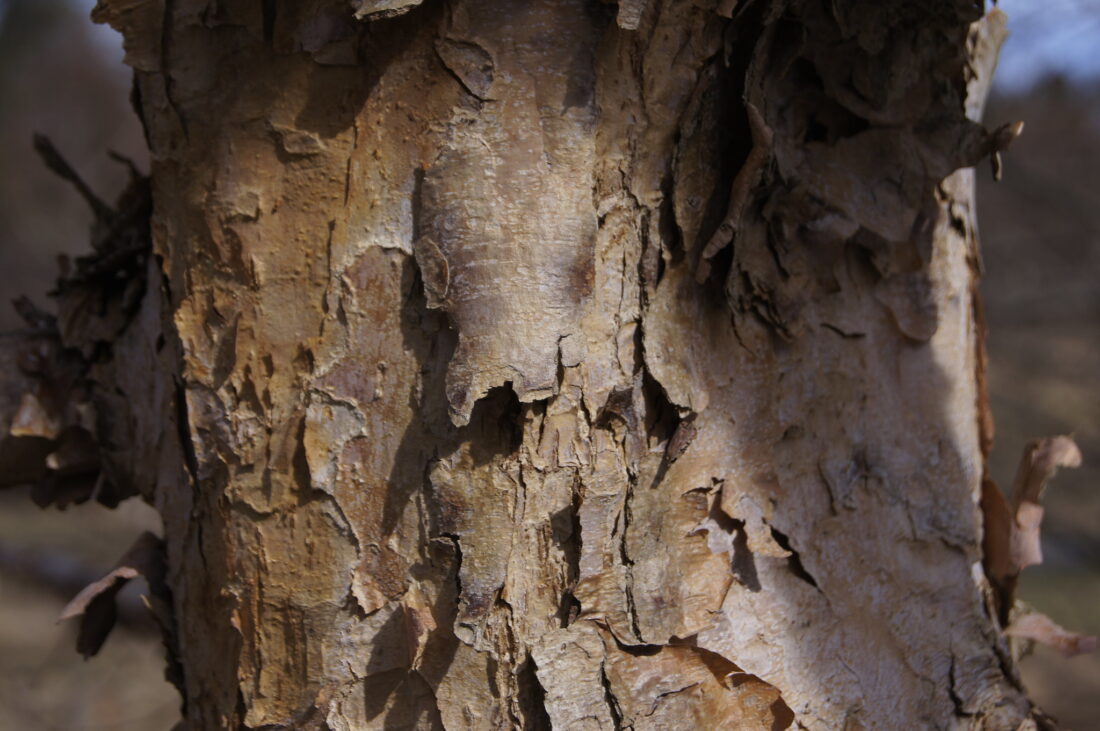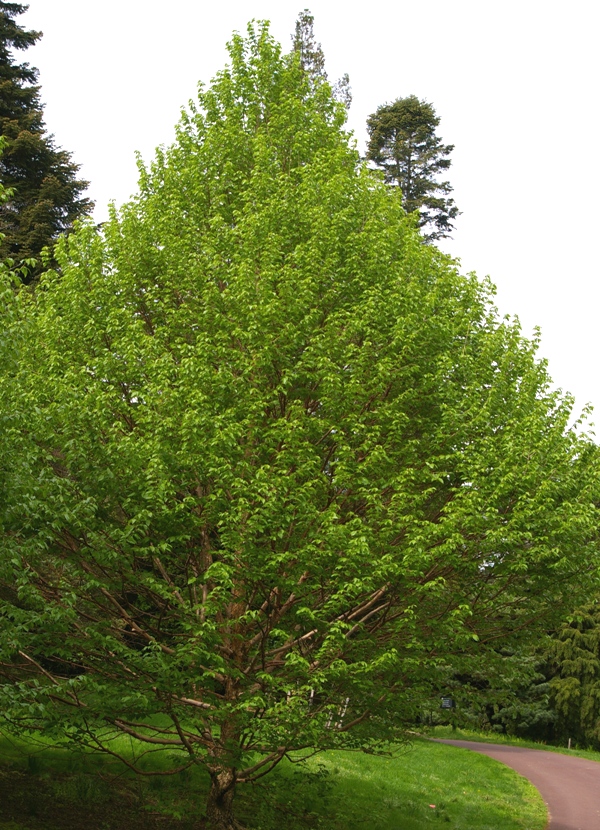Yes, you read that correctly—Father Farges’ filbert. And no, this isn’t just another obscure plant name to tuck away in the back of your botanical brain. This is one of the most exciting trees I’ve come across in the past half-decade.
This alliterative filbert is named for Father Paul Guillaume Farges, a 19th-century Catholic missionary and plant explorer who spent much of his life in China. If his name rings a bell, it’s probably because he has several plants named in his honor, most notably the clumping bamboo Fargesia. But of all the plants that bear his name, I’d argue that none are quite as remarkable as this one—Corylus fargesii, better known as Farges’ filbert.

What Makes Farges’ Filbert So Special?
For starters, this tree has exceptional bark—some of the best in the business. Think of the coppery peeling bark of a paperbark maple (Acer griseum) or a river birch (Betula nigra), but better. It’s richly colored, exfoliating in layers, and offers stunning visual interest year-round. Even in the depths of winter, when most trees fade into the background, this one commands attention.
But bark isn’t its only selling point. The leaves are a clean, deep green in summer, providing a lush canopy that transitions to a warm golden yellow in fall. While its nuts are technically edible (as you’d expect from a filbert), it’s not cultivated for heavy nut production—this is first and foremost an ornamental tree.
A Rare Find in North America
Despite its many virtues, Corylus fargesii is still relatively unknown in North American landscapes. It’s a newcomer, with the first seeds arriving from China in 1996. Since then, several major botanical gardens, including the Morris Arboretum and Longwood Gardens, have been growing and evaluating it. Some specimens have already reached over 30 feet tall, though its ultimate size in U.S. gardens is still an open question.
What is clear, however, is that this tree has a beautiful, upright form and a strong, well-structured branching habit. It seems poised to be a fantastic addition to gardens and landscapes, particularly for those looking for an alternative to more common ornamental trees like river birch or Japanese maples.

Where to Find It (If You’re Lucky)
Until recently, Corylus fargesii was almost impossible to find outside of research collections. It simply wasn’t available in the nursery trade. But that’s changing—slowly.
A few specialty nurseries have started offering it for sale, and those of us who have been waiting for years to get our hands on one are jumping at the opportunity. Just last week, a staff member at Coastal Maine Botanical Gardens spotted it at Rare Find Nursery, and we wasted no time placing an order.
The Future of Farges’ Filbert
So, will Corylus fargesii become the next great landscape tree? It certainly has the potential. It offers four-season interest, great bark, and a resilient, upright form—all without the common disease issues that plague some other ornamental trees.
The real question is whether it will gain traction with home gardeners and landscapers. As more nurseries start propagating and selling it, I wouldn’t be surprised to see Farges’ filbert become a sought-after specimen tree in gardens across the country.
Have you ever seen Corylus fargesii in a garden? What do you think about its future in the landscape? Drop a comment—I’d love to hear your thoughts.
—Rodney
An excellent summary of Corylus fargesii was written by Tony Aiello, director of horticulture and curator of the Morris Arboretum in Philadelphia. This article was published in the magazine of the Arnold Arboretum, Arnoldia. I linked to the article above as well as by clicking here.
Photos: Robert Gutowski via Flickr, John Grimshaw
really nice story, thanks. I love the bark and the form- should be used more.
Thanks, Nigel! I agree.